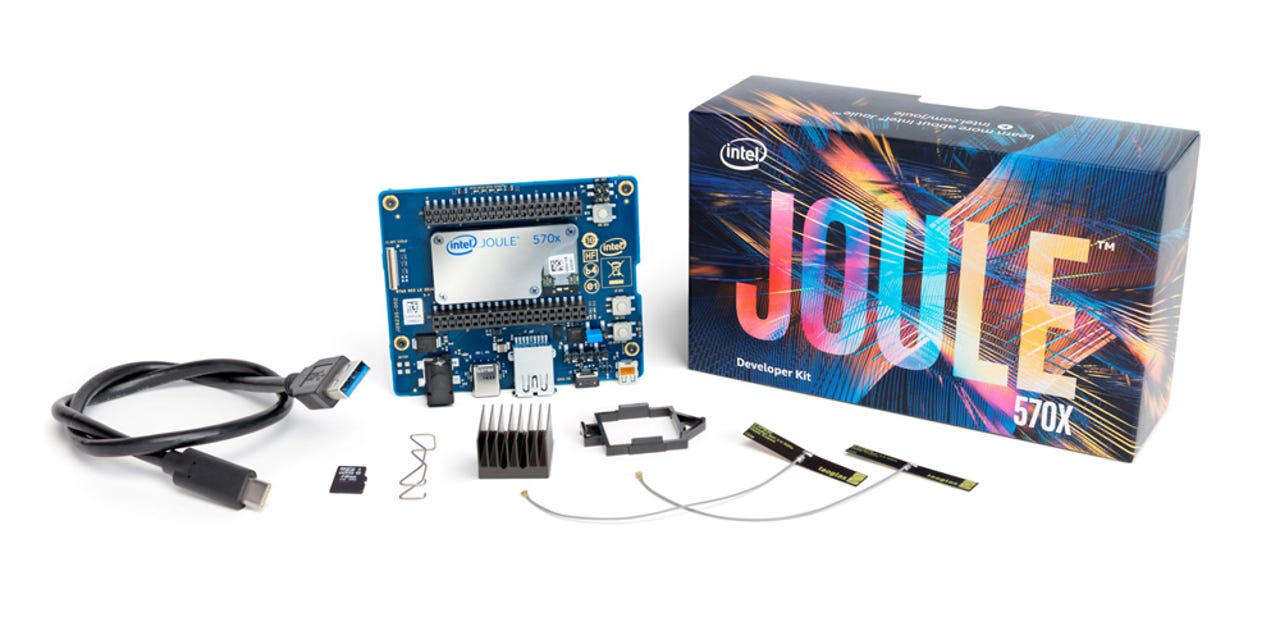IDF 2016: Intel lays out its 5G, IoT strategy


The Joule maker board enables people to quickly and cheaply take an IoT concept from a prototype into production.
"5G is really about the machines," Sandra Rivera, vice president of Intel's Data Center Group, said at the Intel Developer Forum in San Francisco on Tuesday. "The tens of billions of machines and sensors that will connect and create the fabric of our future networks."
At IDF, Intel demonstrated in multiple ways how it's aiming to provide the processing power for those machines. The chipmaker introduced multiple modules designed for all sorts of IoT applications. The Joule maker board, for instance, enables people to quickly and cheaply take an IoT concept from a prototype into production. The system-on-module, equipped with Intel's RealSense camera, is a low-power package that could be used for robotics, industrial IoT, VR and other applications. Meanwhile, the Euclid developer kit is effectively a self-contained computer built for robotics. It has an Intel Atom processor, onboard communications, motion and position sensors and a battery.
During Intel CEO Brian Krzanich's keynote address, another executive heavyweight, GE CEO Jeff Immelt, joined him on stage to drive home how Intel processing power will be an integral part of large-scale IoT applications like industrial IoT and the development of smart cities.
"Industrial productivity has really declined as of late. Old IT tools are really not getting it done," he said. "In the case of GE, we basically say every industrial company has to transform to be a digital company - this is not a choice... You either embrace the future or you're... not going to satisfy the needs of your customers."
That said, industrial IoT won't be as cloud-based as the consumer side, with more industries inclined to rely on edge devices to process data. As an example, they showcased a smart streetlight, powered by Intel Atom processors. The streetlights collect metadata about nearby pedestrian foot traffic such as how many people were walking by, how fast they're going and in what direction.
GE Chief Digital Officer John Gordon stressed that the streetlights only collect metadata - no personally identifying information. The information could be used, obviously, to help city planners manage foot traffic. Developers could also find ways to use the metadata to produce applications in areas like health care, Gordon said.
Along with adding processing power to IoT devices and providing servers for the cloud, Intel is trying to enable the network transformation to 5G. For instance, Intel Architecture processors are optimized for virtualized environments, while Intel QuickAssist Acceleration Technology provides services like encryption and compression for virtualized instantiations.
While we have yet to see the "killer app" for 5G, "much of the use cases rolling out today are in virtualized EPC," Rivera said.